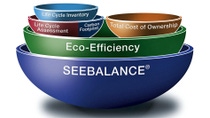Sustainability
Product Responsibility
We continuously work to ensure that our products pose no risk to people and the environment when used responsibly and in the manner intended. With our commitment to Product Stewardship as part of the Responsible Care Initiative, the Global Product Strategy and other initiatives of the International Council of Chemical Associations (ICCA), we are dedicated to continuously minimizing the negative influences of our products on safety, health and environment along the value chain – from development to disposal.





